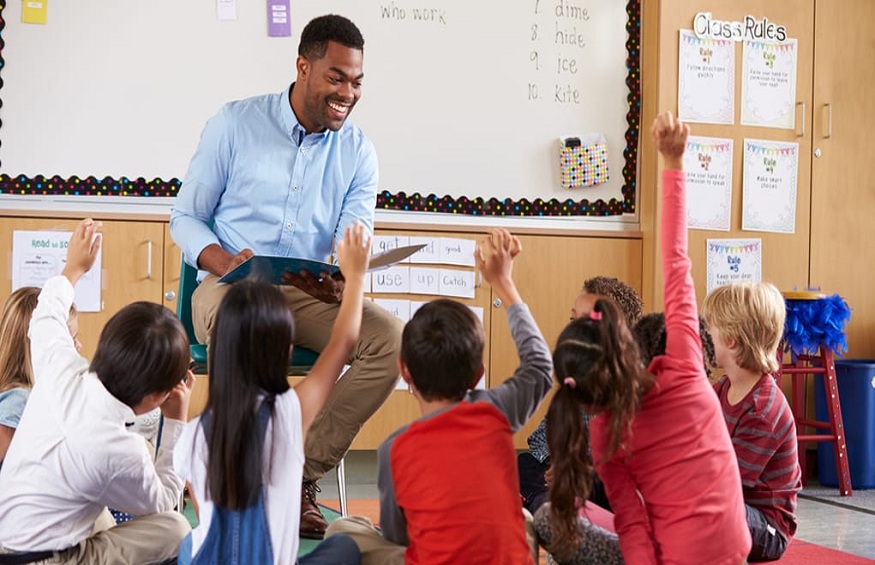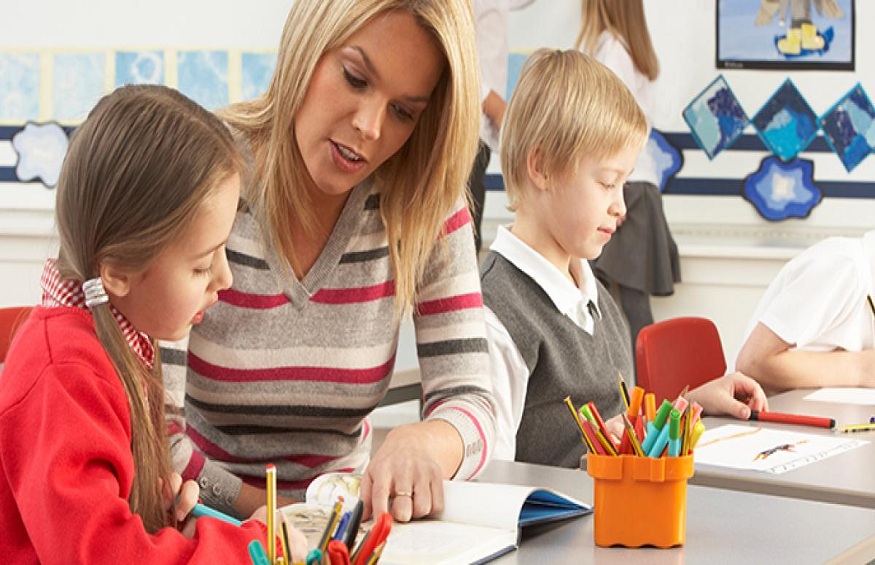The role of the teacher wishing to promote independent learning in his students has three aspects; teacher-student relationship; teaching and modeling skills necessary for independent learning.
The learning environment created by the teacher
Children entering the formal education system are self-directed, intuitive learners. It is important to create an environment that supports the process of autonomy, and allows them to consciously accept responsibility for their own learning and make decisions in this area. The teacher plays an important role at this level, providing students with anenvironment conducivewhich encourages motivation, self-confidence, curiosity and the desire to learn. Autonomous learning will be fostered by a climate that is flexible, responsive and open to student needs.
The atmosphere, the environment and the very structures of the school should encourage independent learning. Teachers, administrators and others must model self-directed learning attitudes. This educational process creates the context within which students can increasingly take responsibility for their own learning.
Teacher-librarians also have a role to play in this independent learning process. Resource-based learning will enable students to obtain the resources they need and to take an active part in the life of their school and community. Well-designed library programs can provide students with the support and agency they need to take increasing responsibility for their own learning.
In a school system based largely on competition and grades, it is especially important that students develop an interest in learning itself , not as a means to an end. Self-directed learning strategies that respond to students’ interests and questions allow them to be offered lessons that are appropriate to their needs and show that it is the reason they are learning that helps make them autonomous learners .
The teacher-student
relationship The teacher-student relationship should encourage students to take increasing responsibility for their learning. Maturity will help them do this too, and teachers will need to as their students mature let them have more and more control over their own decisions. This transfer of control will be better experienced if it takes place in a school environment “organized to encourage and support students in their process of taking responsibility for their own learning, which will be an increasingly mature and complete decision”. (Kesten, 1987, p.15)
Teachers help students master decision-making processes as instructors, guides and facilitators. In this role, they not only enable them to acquire a solid base of knowledge and experience, but also help them discover what they mean to them, based on their own needs. This approach leads to a more valuable learning experience for students; they are motivated to take closer control of their learning because it is relevant to their needs, both as individuals and as members of society.
As teachers encourage students to take more responsibility for decision-making, they must also judge whether these students are ready to take on such responsibility. They will be able to realize this from their age, their degree of maturity, their skills and their knowledge, and will only be able to do so if they know them well.
As in all Common Essential Learnings, the teaching techniques of the teacher are paramount. The attitudes, skills and knowledge necessary for independent learning will be stimulated in students in large part by the way teachers organize their classroom and their teaching.
It is important that teachers use teaching techniques, strategies and approaches based on the collaboration between student and teacher, in order to encourage participation, when it comes to setting objectives and also to evaluate the learning process. A pedagogical approach that fosters students’ self-confidence and gives them the opportunity to take responsibility for their own learning will also be essential.
Teaching and Modeling Skills Necessary for Independent Learning
An important aspect of the teacher’s role is to demonstrate by example the skills necessary for independent learning.. As with the other Common Essential Learnings, it is important to note that such skills should not be taught alone, but rather be developed in each of the subjects presented in class. It is possible to identify from Herber and Herber (1987) five principles for how teachers can incorporate the teaching of these skills and create an environment in which their students will feel free to become autonomous learners for the life.
Model and practice learning skills
The logical consequence of having learned and practiced a task is the resulting autonomy when it comes to accomplishing it. Students learn through activities that facilitate the transition to independence through the example, demonstration and direct instruction of learning skills. The teacher then gives them the opportunity to practice the skills they have learned, and monitors their progress. It is also important at this stage to share with students what is being accomplished and why .for which the activity in question is useful. The goal is for students to eventually make their own decisions, relate what they have learned to what they already know, make judgments and inferences, apply new ideas, and find learning fun. .
The following would be a good example of this learning process
Students begin a class project on time organization along with a homework assignment. The teacher and the students do the homework together.
The teacher thinks aloud and describes what is necessary to Then the teacher helps the students in the same way for another assignment. The activity is repeated until each student can complete it without help from the teacher, then end up taking charge of the whole process alone. It is important to remind pupils that there are always several solutions to a problem such as the organization of time, and to encourage them to seek the best solution for them. It is also important to follow the exercise with a discussion of each person’s personal adaptations to the problem posed.
The teacher-librarian has an important role to play in the development of independent learning skills, such as limiting a topic of inquiry or identifying sources. See p. 6-7 of Learning Resource Centers in Saskatchewan (Saskatchewan Department of Education, 1988) for a fuller description of the role of the library in the development of independent learning.
Transferring responsibilities from the teacher to the student
It is not by chance that the sense of autonomy develops in a person, but by a concerted effort. The skill aspect of autonomy involves four steps: showing students how to do it; allow them to practice what they have learned; have them structure activities; make them use these activities independently.
How this sequence unfolds depends on the age and prior experience of the student, the level of the task at hand, and the attitude of both student and teacher. The transfer of decision-making responsibility from the teacher to the student is a key element of the teacher’s role if the teacher is to help encourage independent learning; this transfer must be accomplished without the teacher controlling the student’s approach too much, or not controlling it enough. The teacher’s positive attitude towards independent learning, and a good knowledge of the needs, interests and abilities of each of his or her students will further improve the results obtained. This transfer of control is crucial; it leads students to discover how their efforts can affect their learning. They therefore get used to controlling the learning process and derive greater motivation to learn.



